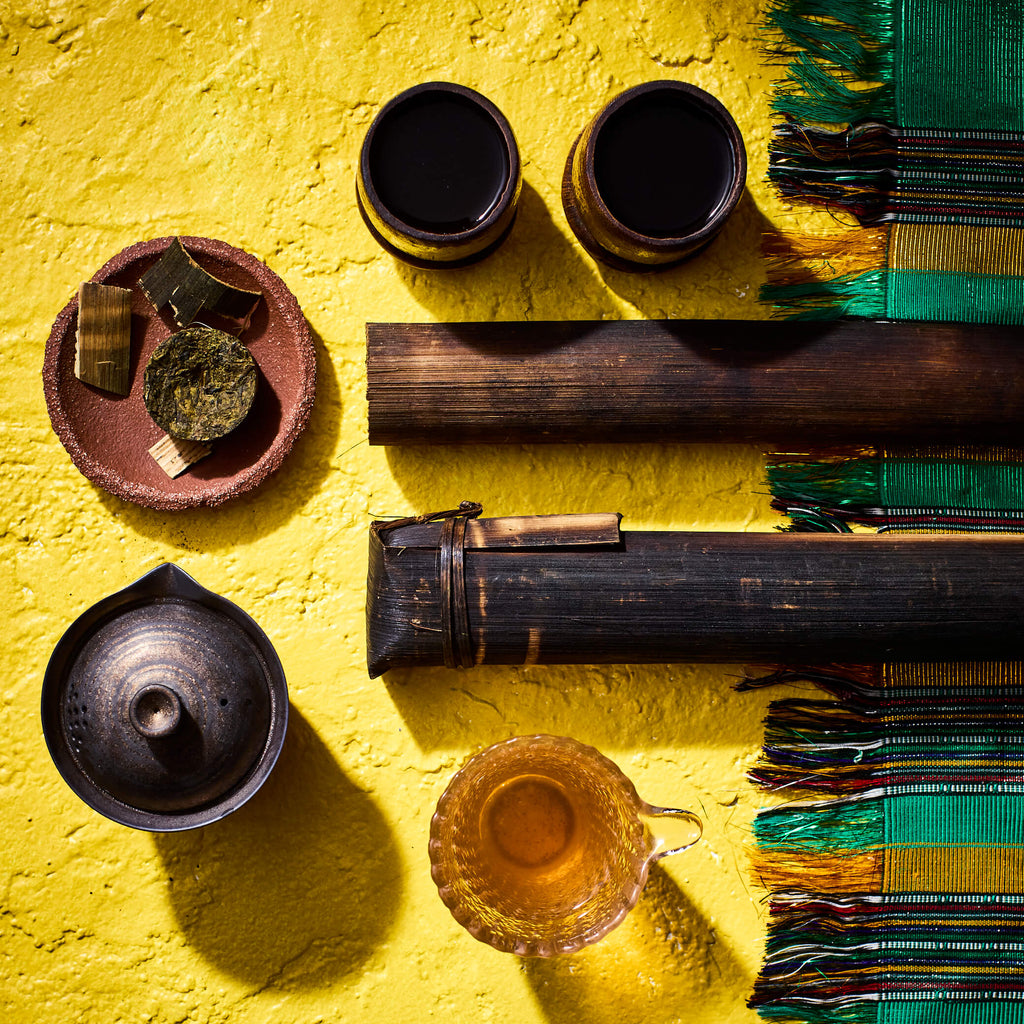Rumor has it that China was the first and only origin of tea and that the British East India Company was the first to introduce tea to India and the world. It is true in some ways that the British East India Company did commercialize the Indian tea industry and bring the Camellia sinensis var. sinensis plant to India, but it is not the history of the origins of tea in India. Tea grew, was plucked, prepared and consumed in India long before its colonization.
North East India shares its border with other countries such as China, Myanmar, Nepal, Bangladesh and Bhutan. Pre-colonization and prior to the piecemeal separation of the Indian subcontinent, this region was a thriving hub for migration and trade where people from different cultures intermingled. It also has an amazing, unique germplasm for diversity of flora and fauna. The Camellia sinensis var. assamica that grows wild in the Yunnan province and is used for pu-erh tea, also grows in parts of North East India, but the exact location of these wild tea trees is a secret that only a few know of.
Tribes of North East India have been making tea long before colonization of India by the British. Tea was used for its medicinal properties, not only consumed as a beverage but also used in culinary. Current practices include fermentation of tea leaves and blending with onions and spices to make a tea pickle and pan frying the tea flowers that are then eaten with a serving of rice.
In the early 1800s Robert Bruce of the British East India Company was introduced to Chief Beesa Gam of the Singhpho tribe by an Indian nobleman Maniram Baruah. His tribesmen would sit on elephants and pluck the leaves of tall wild tea trees to make an ethnic pu-erh style tea called falap or phalap. After plucking, the leaves were pan fried, and pounded into the hollow of a special bamboo. These bamboos were then placed in a cradle over a hearth to undergo a smoking and aging process. The older the phalap the more precious and sought after. Although soon after this meeting between Robert Bruce and Chief Beesa Gam, the Singpho tribe under Chief Ningroo La and the generations after started to cultivate tea plants, some of the more rural tribesmen and other remote tribes such as the Naga tribe continue to use leaves from wild tea trees to date in this interesting indegious tea making process.

At Herbs & Kettles we have been lucky to procure khalap which is a puerh-style aged, smoked, fermented wild tea filled bamboo from the Naga tribe as well as wild black tea blended with wild galangal root from a co-operative in Manipur. We are excited to be able to share these unique artisanal, wild teas created using centuries old practices with you. So what comes next in the saga that is History of India Tea Part 2? It's a thrilling story that includes tea, opium, espionage and theft that we cannot wait to tell you about!




